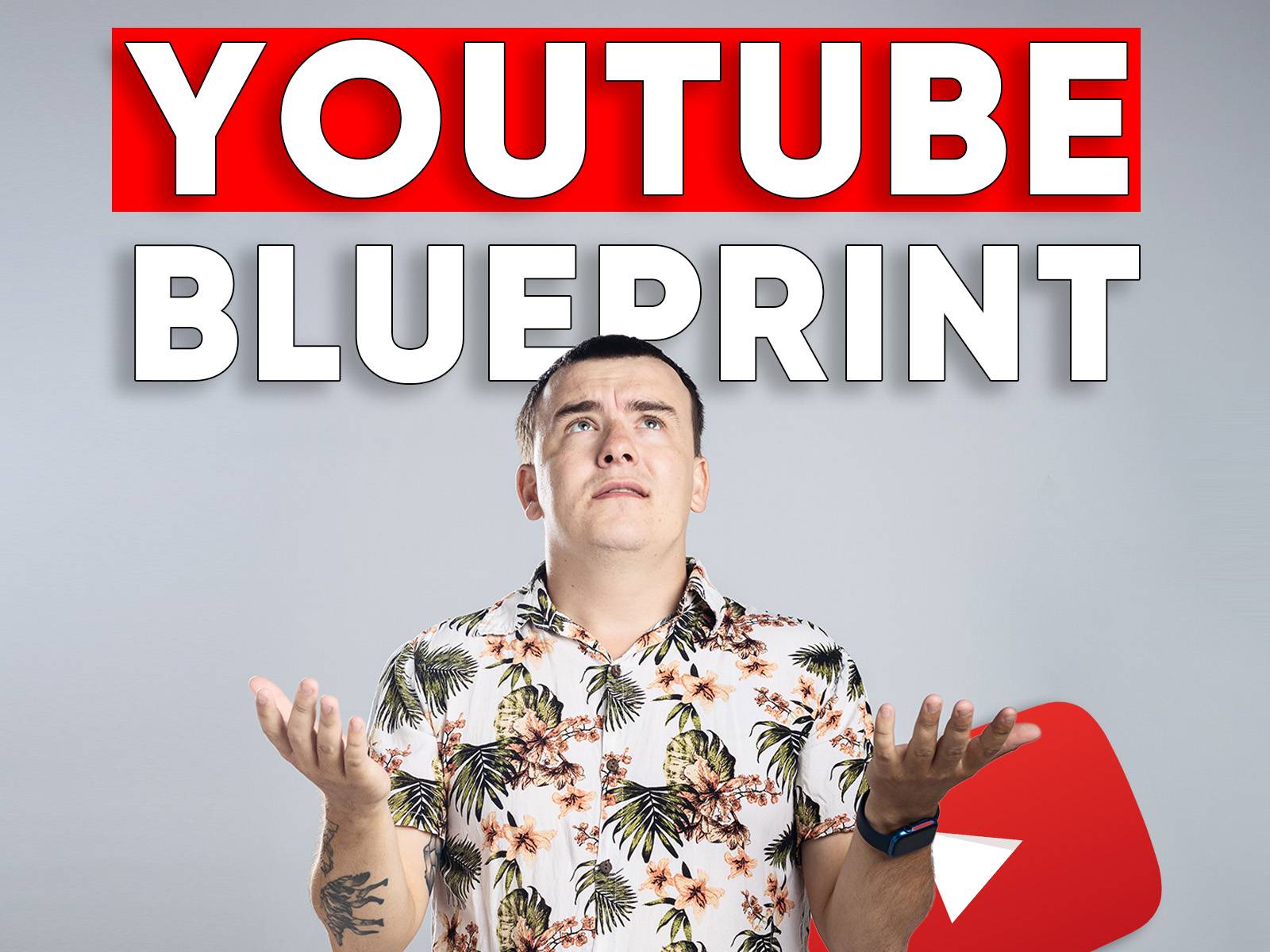Your Blueprint for Effortless Video Creation

Hey,
A few weeks ago we talked about how to get content out as a procrastinator in ▶ The Procrastinator's Guide to Consistent YouTube Content where I briefly touched on the workflow to get content out efficiently.
In this newsletter I'll go deeper to get you a month's worth of content in 1-2 days, solo!
Part of procrastinating is that you just have no idea what to do, but once your path is clear and your content calendar is filled out, it's pretty simple.
In other newsletters, I spoke about the team workflow, so that all of this can be done even faster. ▶ The YouTube team playbook, scale and streamline
Worth Watching
Part of what I do daily is consume a lot of content and here are some of my favorites:
We created a full YouTube Idea Bank with all the previous outliers.
- Walker Deibel - The Only Three Assets That Build Wealth
Proof that you don't need to best gear or editing to make a successful YouTube video. The whiteboard helps with credibility. - Mike Ser Trader - The Oldest Daytrader Made Millions!!!
A video format that always works is reaction videos, providing your opinion on other people's content. - Deya - watch me make & sell a digital product in 110 hours
Probably the most useful video on how to sell a digital product. It's an in-depth how-to too but she is also documenting a process which makes it engaging to watch and see what the results are.
One Weekend to Months of YouTube Content
There are two strategies to get content out consistently.
- You have your system every week from writing to recording and publishing one video each time.
- You can batch-produce everything, and that's what I'm talking about today.
Both have their pros and cons but for a master procrastinator like me, it takes energy to start something, so I avoid having to start something multiple times.

1. Strategic Ideation
There are multiple ways to get ideas for content.
Spark File
This is your video idea bank, like the one I share every week. It overcomes your creative block because whenever you have an idea or see a video you like, you add it to this Spark File. This includes when you find thumbnails you like, and the way someone writes a title. Really analyze what makes you click on content, why you click off on a video etc.
- Use your client questions/conversations as content gold
- Content you watch or listen to
- Success stories of your business (case study)
- ...
Document
- Turn your daily work into content (honestly what this newsletter is)
- Interviews and podcasts, a low-effort way of creating content and getting ideas.
2. Script Architecture
Next is writing out these ideas into a script or a structure so you can deliver this on camera. The question you need to ask yourself here is, are you a word-for-word kinda person or like to go with the flow?
Structure
I can go very deep into the type of hooks and ways to keep people watching (▶ The #1 way to increase retention), but for this I'm gonna keep it simple with a straightforward structure for educational content.
- Deliver on the expectation of the title and thumbnail (what is the video about)
- Touch on their biggest painpoint
- Very short credibility part
- Then you get into the video itself, this is just point by point
- Keep the outro short, no summaries
I suggest always writing out the hook/intro and the outro word for word, even without a teleprompter you can do this. The rest can be done with bulletpoints or you write it all out for your teleprompter.
Planning
To make things easier in the rest of production you want to prepare your script with notes about how to record certain parts and notes for the editor (probably yourself). These notes can be ideas around broll you need to record or what the editor needs to add in post-production such as titles, graphics, ...
This can take a bit of effort but will pay dividends for the results of your video. When starting a team, this can be a role by itself (creative director).
3. Recording Excellence
This part is where most people overthink so much, and you shouldn't. You don't need expensive gear, a phone and a 30-dollar light will get you very far.
Studio
There are 4 things you need to think about.
- Camera
- Light
- Audio
- Stabilization
So the camera can be anything these days, lighting simple LED light panels or some softboxes. Audio, is easiest, a podcast mic connected to your computer or wireless mics connected to your phone or camera and last, just a tripod or gimbal if you are vlogging.
You can argue that background and making it look good is #5, and yes that will come in play eventually.
I can go into more detail about this in a later newsletter. I just want to explain that you shouldn't be overthinking this.
- Setup Optimization (10 mins)
- The minimal viable setup checklist
- Light and audio quick fixes
- Pre-recording environment optimization
Just create a setup that doesn't stop you from wanting to record.
Recording
When recording with a teleprompter you need to keep a few things in mind.
Don't have your text too wide on your screen or prompter so that your eyes are not watching tennis left to right. Then you want to nail the speed that is comfortable for you. Too fast and you sound robotic and rushed, too slow it's boring but it allows you to improvise a little and sound more natural.
The free app I use the called "Teleprompter" and shows your text on your phone while recording from the selfie camera.
If you go with bullet points, you still want to practice your intro multiple times, with or without a teleprompter, redo this part with different energy etc.
To make life easier for the editor or yourself, when you stumble, redo the sentence or paragraph, it will look and sound a lot better in the edit.
Don't get frustrated when it takes a while to get it right, don't rush anything this will show in the video. It's more than normal these things don't come naturally.
For the rest, take breaks when you need to, to reset energy and pace yourself if you are doing multiple videos in one go.
4. Editing
Outsourcing
I don't want to go too deep into this again, I wrote a whole newsletter about finding the right editor last week. ▶ How to find the right video editor, avoid these mistakes.
Hiring an editor should be your number one hire, it will open up so much time for you plus for you to get any good at editing is not worth the effort versus doing what you do as an expert.
Do it yourself
Don't overthink the editing process. Work layered, this means you start with a rough cut, cutting out all that shouldn't be in the video so that it matches the script.
Then you can start adding titles, text, and graphs. And to end maybe some music and sound effects to make it more engaging (subtle!).
Bob is your uncle.
This process is easier when you prepare your idea, script and studio beforehand.
5. Optimization & Upload
This is the final part where it all comes together.
Packaging
This should already be prepared in the ideation stage.
- Title
- Thumbnail
Title is part of coming up with the idea, that needs to be locked in first.
For thumbnails you can take inspiration from what works already and hire a thumbnail designer, for $10-20 you have something simple and good on Fiverr.
If you do it yourself, less is more. Don't make it a poster but something that is clear and creates curiosity.
Description
Again, less is more.
Have your call to action at the top of the description, this is a link to a lead magnet or website.
Add one or two lines of what the video is about.
Add chapters with timestamps, which helps with SEO and retention of your video.
Below all that you can add your social media links etc.
There is an argument that adding links affects your reach on the video but if you are looking for the right views versus a lot of views, it's better for people to know where to go next to check out what you offer.
Make sure to fill out all the characters in the tag window.
Other settings
Always monetize if you can, YouTube prefers having advertising on your videos as that's how they make money.
Add an end card to your videos but limit it to the final 10s as it's an indicator that your video ends and people might click off too soon.
Then schedule according to when your audience is most active, post about an hour before that or just when busy time starts.
6. Data Analysis
This is extra but will help you grow.
See what works and what doesn't. Analyze you data, check your retention graph and see where it goes well and where there is room for improvement.
When something works --> Double down
This can be a topic, or format.
When something doesn't work --> Pivot first
Don't just scrap the idea, it might need some work until it gets some traction, give it 2-3 videos to make conclusions.
I hope this was detailed enough to give you an idea of what you need to focus on.
We are working on a course where we go into a lot more detail for everything so stay tuned for that and reach out if there is something specific you are strugging with.
Want to work with me to grow your business?
If you’re a 7-8-figure founder or agency that wants to grow your YouTube channel, membership, and course — I’d love to work with you.
For 6-figure+ founders and channels, join an exclusive group with 5,500,000+ total subscribers.
Get access to founders, agencies, course creators, community builder and more...



.jpeg)
.jpeg)
.jpeg)